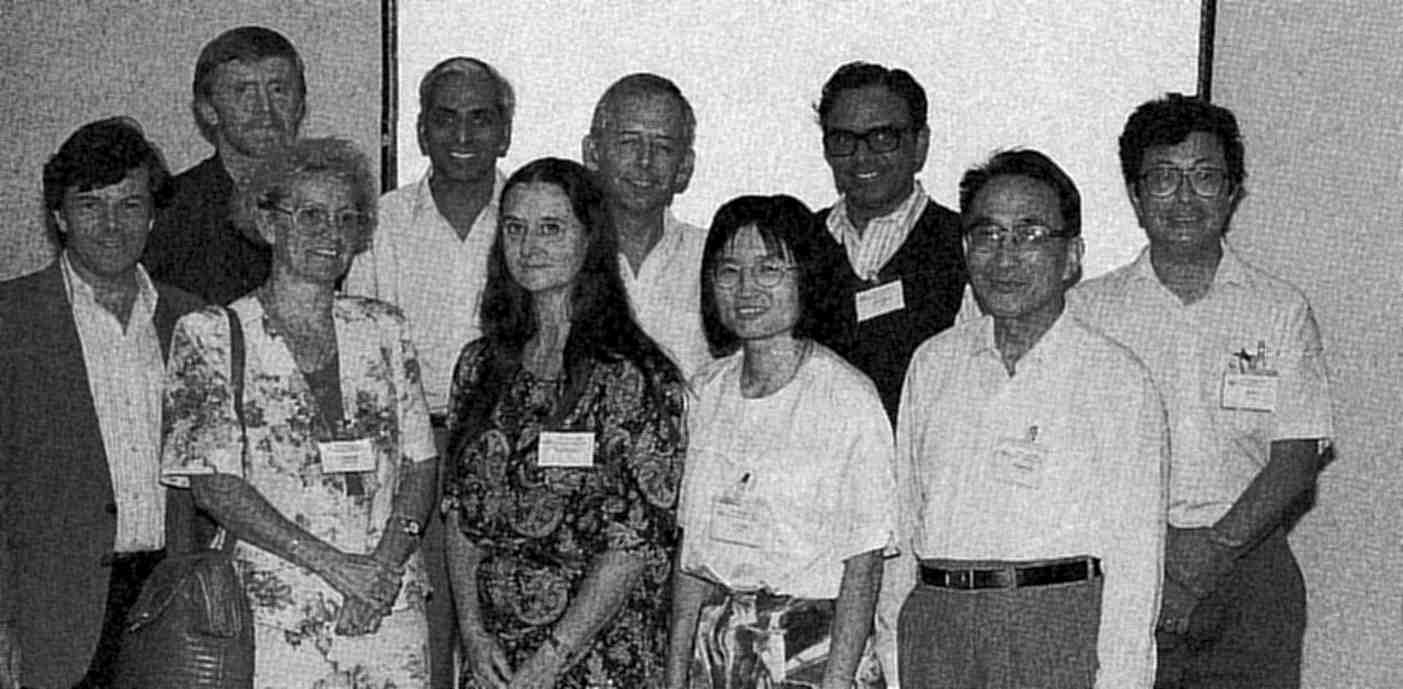


IUCr activities
Macromolecular crystallography: some organizational and pedagogical concerns
 Macromolecule Commission Chair M. Vijayan (back row far right) chaired the sesson on Molecular Structure and Biological Activity at the IUCr Congress in Beijing. Speakers in the session included (front row from left) P. Luger, S. Stankovic, B. Wallace, A. Y. Lee, unidentified, (back row) W. L. Duax, T. P. Singh, G. Precigoux, M. Vijayan, K.Z. Pan.
Macromolecule Commission Chair M. Vijayan (back row far right) chaired the sesson on Molecular Structure and Biological Activity at the IUCr Congress in Beijing. Speakers in the session included (front row from left) P. Luger, S. Stankovic, B. Wallace, A. Y. Lee, unidentified, (back row) W. L. Duax, T. P. Singh, G. Precigoux, M. Vijayan, K.Z. Pan.
Biological macromolecular crystallography has registered phenomenal advances in recent years. This rapid progress has been made possible through technological advances such as those involving synchrotron radiation, position sensitive detectors, and computational and graphics facilities, improved methods of structure determination and refinement, and synergetic interactions between crystallographic and modern biological approaches.
While there were only a few dozen protein crystallographers belonging to a small number of countries a quarter of a century ago, there are now several hundreds of them in research groups all over the globe. The facilities and the expertise available to them and the scientific ambiance in which they work differ widely. Steps to ensure acceptable standards in relation to macromolecular structure determination and procedures to check the correctness and the quality of the results have long been the concern of the Commission on Biological Macromolecules. It is expected that Acta Crystallographica Section D would play a major role in this respect. Full accessibility to macromolecular crystallographic data is another concern which has already been substantially addressed. Most journals now insist on deposition of structural data on the lines suggested by IUCr. This has led to phenomenal increase in deposition at the Brookhaven Protein Data Bank necessitating the development of new ways of deposition, validation, retrieval, and the effective use of macromolecular structural data.
The rapid growth of macromolecular crystallography has also raised questions regarding the adequate training of its practitioners. Perhaps we need more textbooks dealing with different aspects of the subject. The program of schools, workshops, etc. need to be further strengthened with added emphasis on participants from countries which are at present somewhat distant from the mainstream of activities. In the sixties and the early seventies, macromolecular crystallography and small molecule crystallography developed substantially, though not entirely, independently. Macromolecular crystallographers were then largely unconcerned with the approaches employed in small molecule crystallography. The situation began to change with the introduction of methods of structure refinement in macromolecular work and there is now a much greater appreciation of the mutual relevance of macromolecular and small molecule crystallography. The number of crystallographers who work in both the areas is steadily increasing. A thorough grounding in small molecule crystallography has been found to be very useful for coming to grips with macromolecular crystallographic approaches, especially when faced with unforeseen problems. Small molecule crystals are better suited than macromolecular crystals as media for primary training in crystallography. Therefore, it is desirable to make the crystal structure analysis of small molecules an essential component of training in macromolecular crystallography. That, in addition, would also help break the few remaining artificial barriers between small molecule and macromolecular crystallography.
M. VijayanChairman, Commission on Biological Macromolecules


